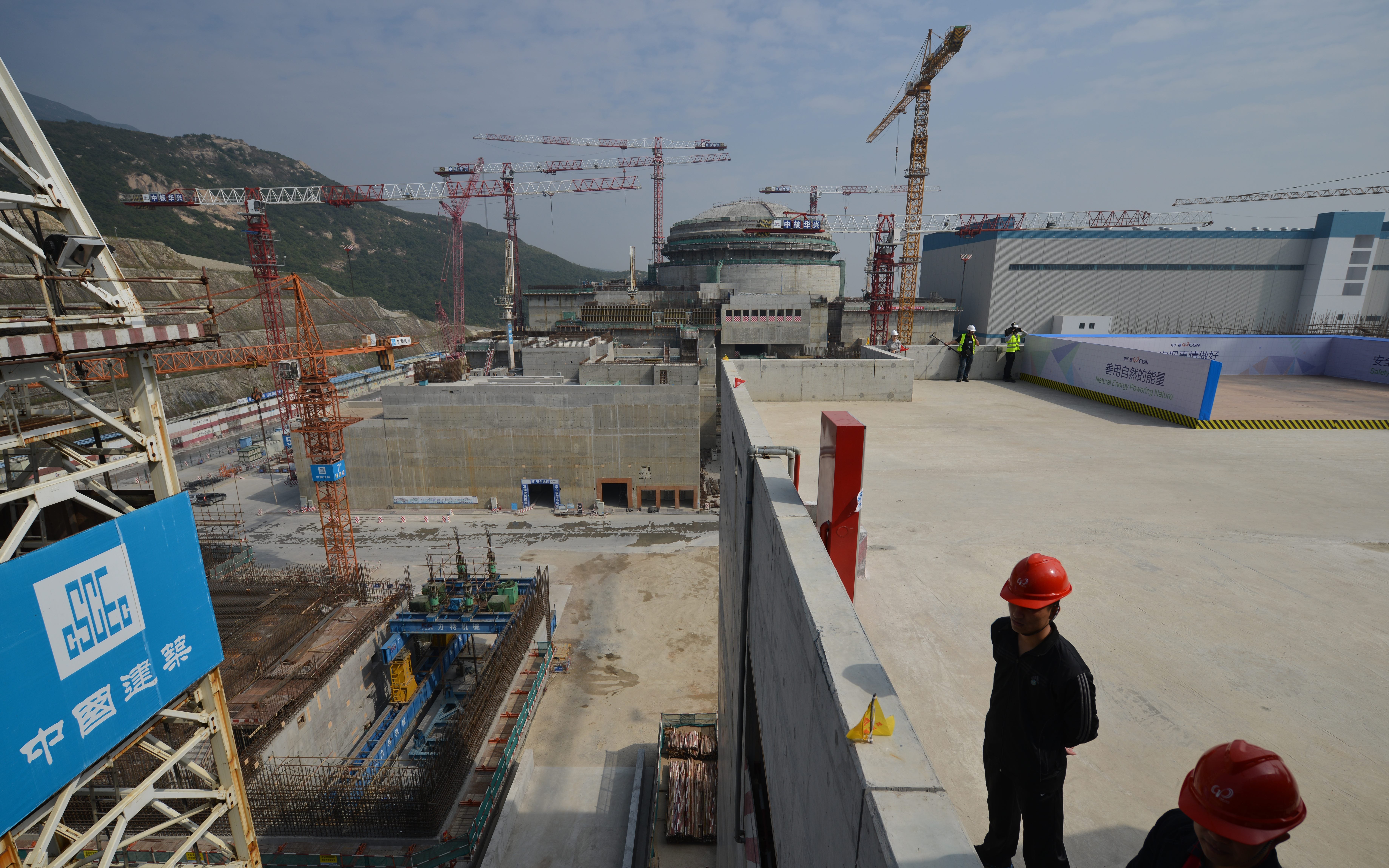China says fuel rods broken at Taishan nuclear facility in first admission of a problem
There were worries about the radioactive leak from No. 1 reactor of the Taishan Nuclear Power Plant in Guangdong province

Your support helps us to tell the story
From reproductive rights to climate change to Big Tech, The Independent is on the ground when the story is developing. Whether it's investigating the financials of Elon Musk's pro-Trump PAC or producing our latest documentary, 'The A Word', which shines a light on the American women fighting for reproductive rights, we know how important it is to parse out the facts from the messaging.
At such a critical moment in US history, we need reporters on the ground. Your donation allows us to keep sending journalists to speak to both sides of the story.
The Independent is trusted by Americans across the entire political spectrum. And unlike many other quality news outlets, we choose not to lock Americans out of our reporting and analysis with paywalls. We believe quality journalism should be available to everyone, paid for by those who can afford it.
Your support makes all the difference.The Chinese government, on Wednesday, admitted that the nuclear power plant in Guangdong province — near Hong Kong — had damaged rods but said that there was no radioactive leak from the plant.
The National Nuclear Safety Administration of China admitted on Wednesday that the concentration of “certain rare gases” in the primary circuit of the Taishan Nuclear Power Plant’s No. 1 reactor has increased “due to a small number of damaged fuel rods,” but emphasised that this was a common phenomenon and that the surrounding radiation monitoring data was normal.
The Ministry of Ecology and Environment said on its social media account that the No. 1 reactor of Taishan Nuclear Power Plant had five broken fuel rods and that the radiations that rose were “contained by barriers.”
The spokesperson for the National Safety Administration of China said that there are more than 60,000 fuel rods in the core of the No. 1 reactor of the Taishan Nuclear Power Plant.
Associated Press reported that the Hong Kong government was watching the plant and asking officials in Guangdong for details after its French co-owner, Framatome ( a subsidiary of EDF), on Monday reported increased “noble gases” in the reactor.
Earlier also, the Taishan facility had leaked a “small amount” of radioactive gas on 9 April as per the National Nuclear Safety Administration website. It however said that it was “without safety significance.”
In a statement, the Ministry of Ecology and Environment said: “There is no problem of radioactive leakage to the environment.” And added that the radiation in the reactor coolant increased but was within the “allowable range.” It said that the regulators will oversee measures to control the radiation levels.
The Taishan Nuclear Power Plant began operations in December 2018. It is owned by China Guangdong Nuclear Power Group and Electricite de France. A second reactor began operating in September 2019.
CNN had earlier reported that the US was assessing whether there was a leak at Taishan Nuclear Power Plant at Guangdong, about 75 miles west of Hong Kong. CNN reported that the French company that part-owns and helps operate it had warned of an “imminent radiological threat.” According to a letter from the French company to the US Department of Energy — that was obtained by the CNN – “Chinese safety authority was raising the acceptable limits for radiation detection outside the Taishan Nuclear Power Plant in Guangdong province in order to avoid having to shut it down.”
Dr Clare Corkhill, a nuclear expert from Sheffield University said the situation needs to be monitored. “If the inert gases are in the primary coolant then it is unlikely that any radioactivity will be released outside of the reactor. Clearly though, Framatome are concerned enough to request international assistance from the US.”
China’s National Nuclear Safety Administration, in its response, said that it “has not approved an increase in the acceptable limit of radiation detection outside the Taishan Nuclear Power Plant.” It added: “The National Nuclear Safety Administration reviewed and approved the relevant limits of the specific activity of the reactor coolant inert gas in the technical specifications of the primary circuit chemistry and radiochemistry of the Taishan Nuclear Power Plant. This limit is used for operation management and has nothing to do with the external radiation detection of the nuclear power plant.”
Dr Corkhill said the key thing is having the right safety measures in place when something like this does happen. “Thinking about Hinkley Point C (which is the same type of reactor), this type of fuel rod breach could happen, but to raise the level of acceptable radiation in the coolant system would be subject to approval from the regulators (ONR). It’s more likely that they would just shut down the reactor for a fuel change and decontamination.”
Join our commenting forum
Join thought-provoking conversations, follow other Independent readers and see their replies
Comments